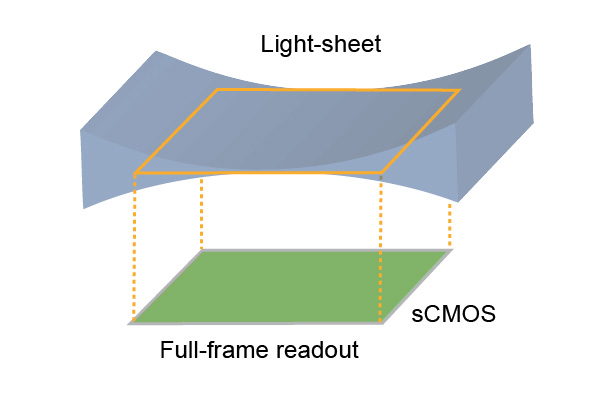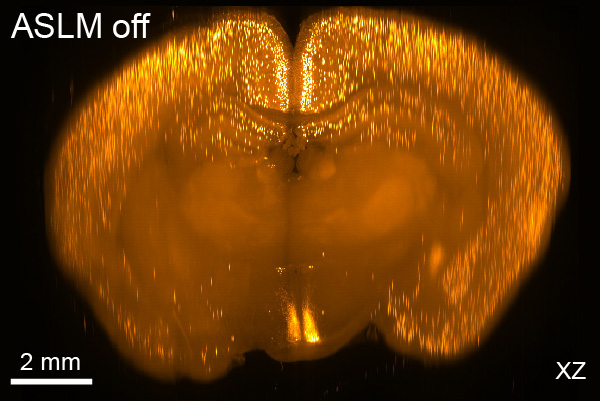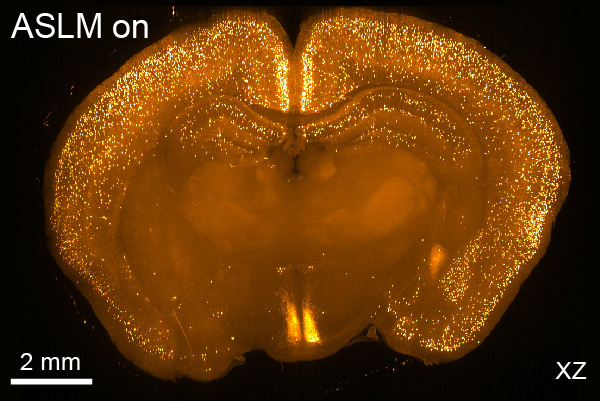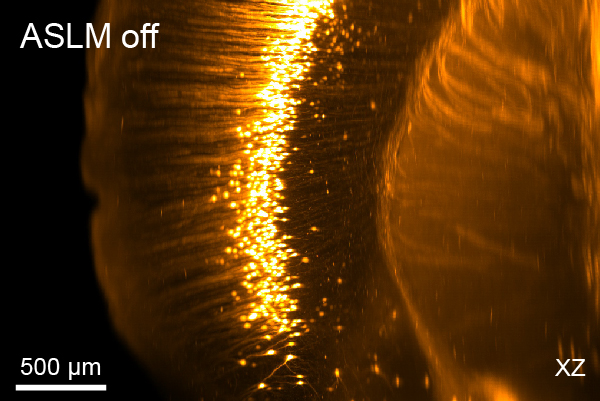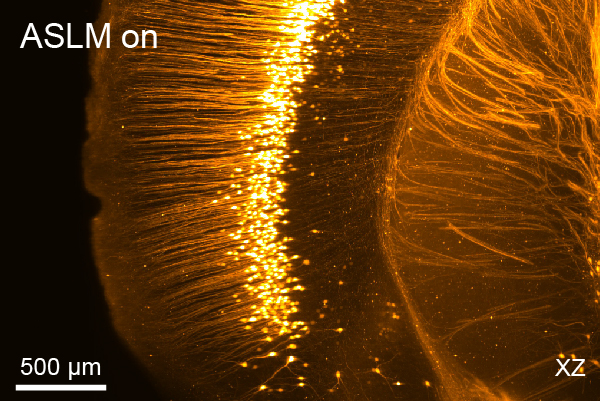Varying light-sheet thickness leads to varying axial resolution.
In a standard light-sheet microscope with Gaussian illumination, the varying thickness of the lightsheet leads to axially blurred features at the edges of the field of view.
Axially scanned light-sheet microscopy (ASLM)
In axially scanned light-sheet microscopy (ASLM), the waist of the light-sheet is translated through the sample in synchrony with the rolling shutter of the camera. The concept was published in 2015 by Dean et al. (Fiolka group). To translate the waist, we use tuneable lenses by Optotune.
XZ view of a slice of a whole mouse brain with standard light-sheet illumination.
Here, a XZ view of a VIP-tdTomato mouse brain (cleared using passive CLARITY) shows the axial blurring of neurons gradually increasing from the center to the edges of the FOV. Cells in the center are well resolved in z as they are close to the waist locatation of the light-sheet. Cells at the edges, however, are blurred and indistinguishable due to the thicker light-sheet.
XZ view of a slice of a whole mouse brain with ASLM mode enabled
After switching the ASLM mode on, cells can be resolved in the axial direction across the whole FOV.
XZ view of Thy1-YFP mouse brain without ASLM
Even at higher magnification, ASLM is helpful. In this Thy1-YFP dataset taken at zoom 4x, axons and dendrites at the edges of the FOV are blurred.
XZ view of Thy1-YFP mouse brain with ASLM
After switching the ASLM mode on, dendrites and axons are well resolved in the XZ plane.
